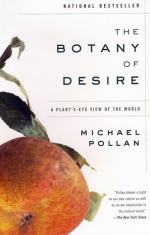
|
| Name: _________________________ | Period: ___________________ |
This test consists of 15 multiple choice questions and 5 short answer questions.
Multiple Choice Questions
1. Chapman stated that he was promised "a true wife in heaven" and thus he never ______.
(a) Lived at home.
(b) Spoke to women.
(c) Had relationships.
(d) Married.
2. The domestic apple is thought to have derived from a species that originally came from the country ______.
(a) Uzbekistan.
(b) Pakistan.
(c) Kazakhstan.
(d) Afghanistan.
3. _______ is the name of the black version of the tulip and is as close to black as a flower gets.
(a) Black Dhalia.
(b) Queen of Darkness.
(c) Queen of Despair.
(d) Queen of Night.
4. The book states that certain flowers are reminiscent of Greek Gods. The rose and the peony are stated to be flowers of ______.
(a) Venus.
(b) Zeus.
(c) Apollo.
(d) Dionysus.
5. Instead of wind and water moving genetic material around, the emerging plants were now enlisting the help of ______.
(a) Viruses.
(b) Mold.
(c) Animals.
(d) Bacteria.
6. Pollan refers to the _____ as the gothic femme fatale in the masculine world of tulips.
(a) Semper Augustus.
(b) Switsers.
(c) Black Dhalia.
(d) Queen of Night.
7. _______ or 'white lightning' preceded hard cider as the alcohol containing drink of choice on the frontier.
(a) Rum.
(b) Corn liquor.
(c) Potato liquor.
(d) Potato vodka.
8. Appleseed used most of his crops in order to make ______, which led him to be thought of as an 'American Dionysus.'
(a) Apple vodka.
(b) Apple pie.
(c) Apple crisp.
(d) Fermented cider.
9. The process through which humans and plants have shaped each other over the years is known as _______.
(a) Co-evolution.
(b) Co-emergence.
(c) Co-dependence.
(d) Co-occurence.
10. The Native Americans that knew Chapman considered him to be a brilliant woodsman and ______.
(a) Guide.
(b) Hunter.
(c) Medicine man.
(d) Farmer.
11. When a buyer of tulips finished the sale, they were required to pay "wijnkoopsgeld" or ______ money.
(a) Bulb.
(b) Wine.
(c) Beer.
(d) Breeding.
12. The flower that is presented as being the symbol of the human desire for beauty is the ______.
(a) Rose.
(b) Lily.
(c) Carnation.
(d) Tulip.
13. The book states that before flowers there was no connection between the way things looked and ______.
(a) Reproduction.
(b) Their function.
(c) Suvival.
(d) Desire.
14. Clusius brought tulips with him to Leiden garden where they eventually ______ due to their rareness.
(a) Were given as gifts.
(b) Were stolen.
(c) Died.
(d) Were sold.
15. Before flowers, sexual reproduction consisted of _____ being dispersed by the wind to be caught by other plants.
(a) Pistils.
(b) Petals.
(c) Stamens.
(d) Pollen.
Short Answer Questions
1. According to the book, the plants that form flowers and then encased seeds are known as ______.
2. Pollan asserts that Jews and Christians discouraged devotion to flowers because it was a threat to _______.
3. The early colonists to America in addition to bringing grafts also brought apple seeds to plant called ______.
4. The color of a tulip is always composed of _____ hues one of which is a base color that is always yellow or white.
5. Johnny Appleseed was known for introducing the apple to the following states except _____.
|
This section contains 452 words (approx. 2 pages at 300 words per page) |

|




